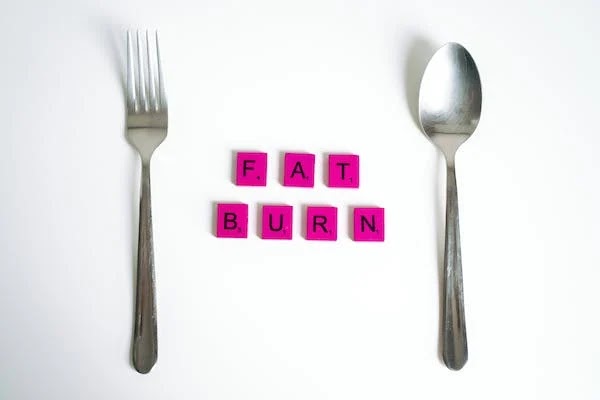 |
| What Is Osteoporosis ? |
What Is Osteoporosis ? What are the causes of Osteoporosis ? What are the symptoms & treatment of Osteoporosis ? | Health Tips
Introduction
Osteoporosis is a serious condition that can lead to fractures and other health problems. It is important to learn about the symptoms, causes, and treatment of osteoporosis so that you can identify the condition and get treatment if necessary.
This guide provides a comprehensive overview of osteoporosis, including information on the symptoms, causes, and treatment options. It also includes a list of resources for more information on osteoporosis.
What Is Osteoporosis ?
A condition that damages the bones is osteoporosis.
It is brought on by a decrease in bone density, which renders the bones brittle and fragile. In addition to other health issues, this may result in fractures.
Medication and dietary changes can both be used to treat osteoporosis. The earlier it is treated, the better the prognosis, thus it is crucial to catch it early.
Who gets osteoporosis ?
According to estimates, there are 200 million cases of osteoporosis worldwide. About 54 million people live in the United States. Despite the fact that both men and women can get osteoporosis, women are four times more likely to do so. In the United States, there are currently roughly two million men who have osteoporosis and another 12 million who are at risk of getting it.
In their lifetimes, one in two women and one in four men who reach the age of 50 may experience an osteoporosis-related fracture. Another 30% of people are at risk of osteoporosis due to their low bone density. Osteopenia is the name for this condition.
Every year, osteoporosis causes more than two million fractures, and this number is rising. You can take measures to guard against developing osteoporosis. If you do have osteoporosis, treatments can also delay the rate of bone loss.
What are the causes of Osteoporosis ?
Causes of Osteoporosis
Osteoporosis is caused by a variety of factors, including genetics, lifestyle choices, and certain medical conditions.
Some of the most common causes of osteoporosis include:
Genetics: Some people are more likely to develop osteoporosis due to their genes.
Lifestyle choices: Smoking, drinking alcohol, and not getting enough exercise can all increase your risk of developing osteoporosis.
Medical conditions: Certain medical conditions can also increase your risk of developing osteoporosis. These conditions include rheumatoid arthritis, diabetes, and thyroid problems.
More Read : When should you eat bananas ? Benefits and side effects of eating bananas | Nutrition
What are the symptoms of Osteoporosis ?
Symptoms of Osteoporosis
If you are experiencing any of the following symptoms, you may have osteoporosis:
- Back pain
- Pain in your hips, ribs, or arms
- A fracture, even a minor one, after a fall
- Height loss
- Difficulty walking
Please schedule an immediate appointment with your doctor if you experience any of these signs. Treatment is necessary for osteoporosis, a dangerous disorder .
Different Stages of Osteoporosis
There are four different stages of osteoporosis, each with its own set of symptoms and treatment options.
Stage one is regarded as having mild osteoporosis. You might not be exhibiting any symptoms at this time. Should you experience any, they may be quite little and include things like a slight height loss or a slight bending of the spine.
Stage two is considered moderate osteoporosis. Symptoms at this stage may include more significant height loss, bone fractures, and a noticeable curvature of the spine.
Stage three is considered severe osteoporosis. Symptoms at this stage can be extremely debilitating and may include chronic pain, immobility, and an increased risk of fractures.
Stage four is considered end-stage osteoporosis. This is the most advanced stage of the disease and can be life-threatening. Symptoms at this stage include complete immobility, multiple fractures, and a high risk of death from complications.
How is osteoporosis diagnosed ?
Your doctor may do a test to uncover more information about the state of your bones before issues emerge. Testing for bone mineral density (BMD) is often referred to as dual-energy X-ray absorptiometry (DEXA or DXA) scans. These X-rays produce relatively little radiation and are used to determine how solid the bones of the wrist, hip, and spine are. Regular X-rays won't pick up osteoporosis until disease has greatly advanced.
Having a bone density test is recommended for all women over 65. Women with osteoporosis risk factors might undergo the DEXA scan earlier than usual. A bone density test should also be considered for men over the age of 70 or younger individuals with risk factors.
What are the treatment for Osteoporosis ?
Treatment Options for Osteoporosis
Now that you know what osteoporosis is and what causes it, you're probably wondering what you can do to treat it.
There are numerous therapy alternatives, and each person will respond best to a distinct course of action.
The most important thing you can do is to make sure that you get enough calcium and vitamin D. This will help to slow the progression of the disease and prevent further bone loss.
Additionally, a variety of drugs can be provided to help treat osteoporosis. These include estrogen treatment, calcitonin, and bisphosphonates.
Is Osteoporosis Treatable ?
The condition of osteoporosis can be controlled but not treated. Stopping bone loss and preventing fractures are the objectives of treatment.
If you have osteoporosis, your doctor may recommend lifestyle changes, such as getting more calcium and vitamin D and doing weight-bearing exercise. They may also prescribe medication to help reduce bone loss.
A dangerous illness called osteoporosis can cause crippling fractures. However, you can help prevent or reduce the progression of the condition with early diagnosis and treatment.
Prevention
Maintaining strong bones throughout your life requires a good diet and regular exercise.
Calcium
1,000 milligrams of calcium are required daily for both males and women between the ages of 18 and 50. When women age 50 and men reach 70, the daily requirement rises to 1,200 milligrams.
Good sources of calcium include:
- Low-fat dairy products
- Dark green leafy vegetables
- Canned salmon or sardines with bones
- Soy products, such as tofu
- Calcium-fortified cereals and orange juice
If your diet isn't providing you with enough calcium, think about taking calcium supplements. Kidney stones, on the other hand, have been linked to an overabundance of calcium. Although the exact explanation is still unknown, some experts claim that excess calcium, especially from supplements, can raise the risk of heart disease.
For individuals over 50, the Health and Medicine Division of the National Academies of Sciences, Engineering, and Medicine advises limiting daily calcium intake to no more than 2,000 mg from supplements and diet combined.
Vitamin D
Vitamin D boosts the body's capacity to absorb calcium in addition to other ways it benefits bone health. People can get some of their vitamin D from sunlight, but if you live in a high latitude, are confined to your home, constantly use sunscreen, or avoid the sun to lower your risk of developing skin cancer, this may not be the greatest source for you.
More Read : What is Clove Tea ? What are the benefits and side effects of Clove Tea ? | Nutrition
Dietary sources of vitamin D include cod liver oil, salmon, and trout. The addition of vitamin D to various milk and cereal variations is common.
The majority of adults require 600 IU or more of vitamin D daily. At 70 years of age, the daily dosage is increased to 800 IU.
If you don't have access to alternative vitamin D sources or get minimal sun exposure, you could need a supplement. The majority of multivitamin formulas contain 600–800 IU of vitamin D. 4,000 IU of vitamin D daily is safe for most people.
Exercise
You may strengthen your bones and stop bone degeneration by exercising. Exercise is good for your bones no matter when you start, but you'll gain the most if you start regularly when you're young and keep doing it as you age.
Combine weight-bearing, balancing, and strength-building workouts. Your bones, arms, and upper spine will benefit from strength training. Your legs, hips, and lower spine are significantly influenced by weight-bearing workouts including walking, running, sprinting, stair climbing, skipping rope, and impact-producing sports. In especially as you age, tai chi and other balance activities can help lower your chance of falling.
For Google News : https://news.google.com/publications/CAAqBwgKMP2KwQswj6bYAw
Conclusion
Osteoporosis is a debilitating and progressive disease that can cause fractures and height loss. It is most commonly caused by a lack of estrogen in women, but can also be caused by other factors such as smoking, alcohol abuse, and a poor diet. Early diagnosis and treatment is key to preventing further damage to the bones. There is no cure for osteoporosis, but there are a number of treatments that can help to slow its progression.

.jpg)



.webp)
